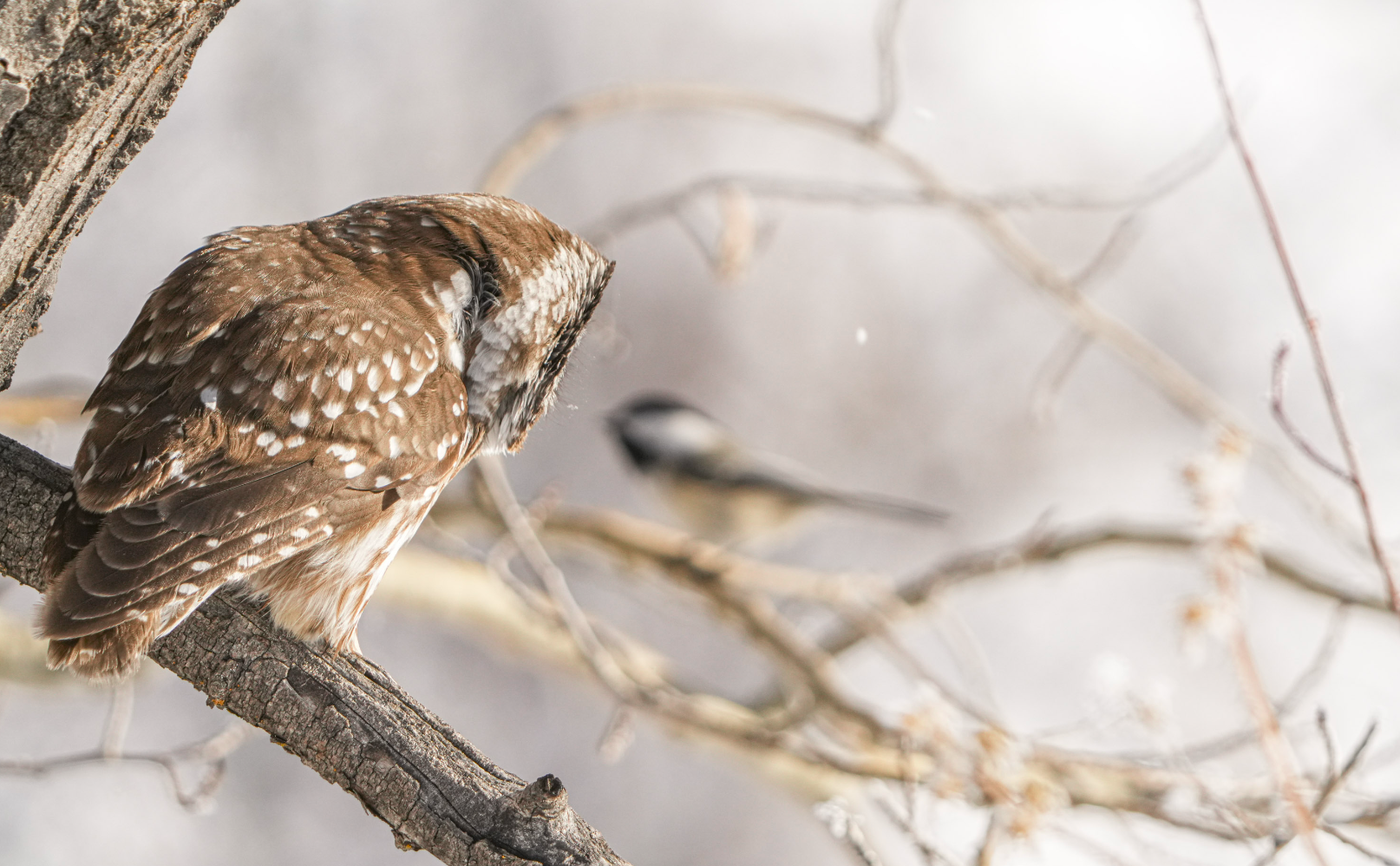January 12-18, 2025
This has been an owl-fully good winter

There were a number of clear days and nights this week with temperatures dropping into the teens and single digits in the absence of clouds.

Winter Ecology Talk
If you missed my winter ecology talk at the library last week, I'll offer it again as a Zoom presentation for the North Cascades Institute on January 22. Please join me for this fascinating talk.

Week in Review
Every year there is a stretch of mostly sunny weather from mid-January to early February and it seems like this happens everywhere on the West Coast. I don't understand what creates this pattern but thank goodness for this welcome respite in the middle of winter.

As people are drawn outside into the sunshine, we have more opportunities to see signs of wildlife. I've been out several times in search of snowshoe hares, and it's been fun to discover tracks and signs that a wide range of animals, including mountain lions, are leaving behind.


Mountain lion scratches on an aspen tree (photo by David Lukas) and a mountain lion track (photo by Cyndi Mundhenk)
On one outing I also noticed thousands of alder seeds scattered on the snow next to cattail heads that were bursting open and releasing their seeds as well. This seems like the wrong time of year to drop seeds, but it might be a wise strategy because there are very few seed eaters wandering around right now and the next snowfall will cover and protect the seeds until the spring. I have never noticed this before, but I'll be paying more attention next winter.


Alder seeds and cattail seeds scattered all over the snow. Photo by David Lukas
Finally, this continues to be a phenomenal winter for owls in the Methow Valley. While walking with Roni and Pete Freund from the Cascade Loop Association we discovered a flock of nuthatches angrily scolding a northern pygmy-owl that had just caught a pygmy nuthatch. It was amazing to watch the owl methodically eat the nuthatch, and Pete got some fantastic photos (you'll also love his short video of the owl).

Kent Woodruff has told me he's seen 13 species of owls in the Methow River watershed and by any measure that could easily be a record number for any location in the United States. We have everything from flammulated owls that favor dry, warm woodlands to boreal owls that favor very cold, remote mountain peaks. Knowing we have this many owls makes every outing an exciting adventure because you never know what you might find!

Observation of the Week: Red Squirrels and Rose Hips
Despite the warming sun, this is still a tough time for animals because food reserves are stretched thin this late in the winter and there are still many weeks to go until the first hints of spring appear.

One of the things I start looking for at this time of the year is red squirrels eating rose hips. Rose hips are a full of vitamins and nutrients, but they are also perched at the ends of thorny branches, which makes it very hard for squirrels to access them.

Squirrels can't walk out on these thorny branches, so they're forced to wait until enough snow has accumulated for them to reach up and grab the fruits from the ground. In a way, the timing is perfect. This abundant source of food is generally off limits until later in the winter, and only then can the squirrels access it at a time when they need it the most.

Although there's been plenty of snow this winter, many of the rose hips I've seen are still out of reach because the snow isn't quite deep enough yet. However, one squirrel we observed had come up with novel solution—leaping up and trying to grab rose hips.

The squirrel wasn't always successful, and this strategy resulted in some awkward backflips, but the pile of scraps indicates that the squirrel was finding the food it needed.

